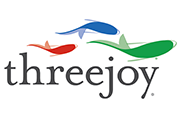Top 5 regrets of the dying
I was doing my morning tweet practice of inspirational quotes, and I came across a quote, which I posted:
“The same view you look at every day, the same life, can become something brand new by focusing on its gifts rather than the negative aspects. Perspective is your own choice and the best way to shift that perspective is through gratitude, by acknowledging and appreciating the positives.”
― Bronnie Ware @goodreads
I noticed that the quote was from a book, The Top Five Regrets of the Dying: A Life Transformed by the Dearly Departed (book here), and I quickly found a summary HuffPo piece here. The insights come from Bronnie Ware’s work with the terminally ill. The five regrets are expressed as wishes, and I reproduce them in capsule form below:
- “I wish I’d had the courage to live a life true to myself, not the life others expected of me.”
- “I wish I didn’t work so hard.”
- “I wish I’d had the courage to express my feelings.”
- “I wish I had stayed in touch with my friends.”
- “I wish that I had let myself be happier.”
Many of these regrets or wishes are part and parcel of coaching work. Authenticity, work-life balance, emotional awareness & expression, connection, and the realization that happiness is a choice of guided by the quality of our awareness and framing of our thoughts and feelings about what happens are the text or sub-text of many, if not most, coaching conversations.
Seeing the five in such stark relief has me wanting me to go grab my journal and reflect on the five wishes and my own life. Which of the five regrets would be yours if you were suddenly to find yourself at death’s door?
